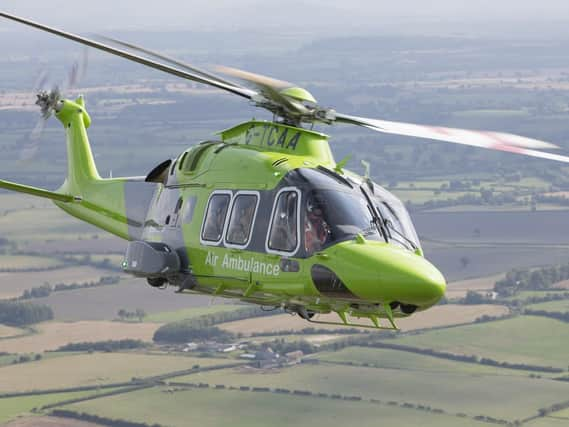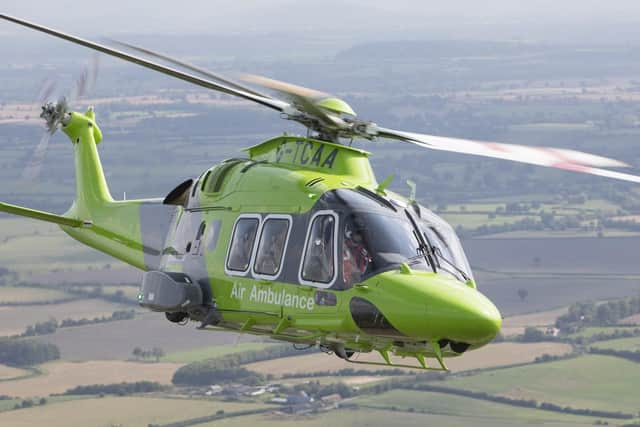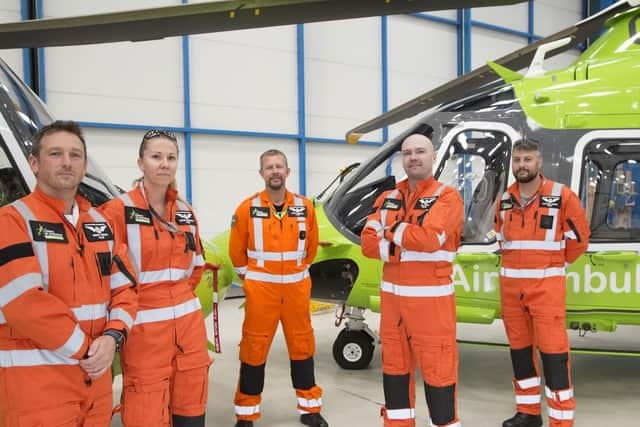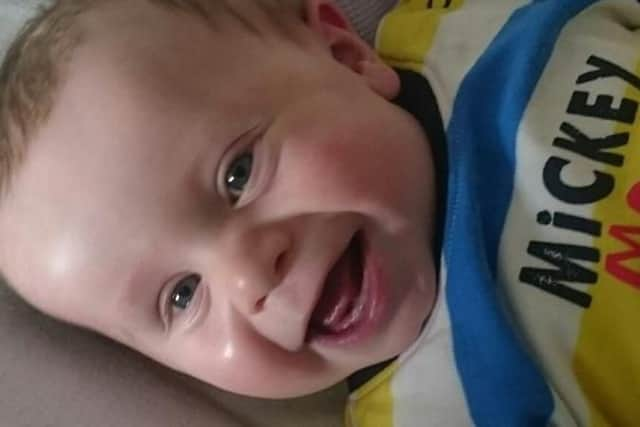Lifesaving children's air ambulance set to be based in Doncaster


The aircraft will be unveiled at the venue tomorrow '“Â and it will mean seriously ill children can be transferred from local hospitals to specialist units in a matter of minutes.
The high vis helicopter and its crew will be based at the Finningley airport and will cover the north of England.


Advertisement
Hide AdAdvertisement
Hide AdIt differs from the usual Yorkshire Air Amulance - commonly used for incidents such as car crashes, falls, and medical emergencies  - as it is specially designed for pediatric care and the high speed transfer of critically ill children to specialist treatment centres.
That means it could be used to transfer patients from Doncaster Royal Infirmary to specialist units like Sheffield Children's Hospital,  the specialist children's heart unit in Leeds, or even Great Ormond Street Hospital in London.
The 161mph aircraft will mean the helicopter could make the journey from Doncaster Royal Infirmary to Sheffield Children's Hospital in less than 10 minutes
Officials at the charity which runs the service say the Children's Air Ambulance is changing the face of pediatric care through the high speed transfer of critically ill children.They estimate it is up to four times faster than by road.


Advertisement
Hide AdAdvertisement
Hide AdIt will allow for national transfers of patients or clinical teams between hospitals, with the patients made up of children up to and including 18 years old weighing up to a maximum of 130kg including the stretcher.
The crew is made up of two pilots who fly with up to three clinical specialists, usually two nurses and a consultant. The new helicopter will also be able to take a parent on the journey.Â
Conventional air ambulances do not have space to carry as many specialist medics or a parent.
The helicopters can take off with as little as 20 minutes notice.


Advertisement
Hide AdAdvertisement
Hide AdBut the average cost of a mission is £3,500 and the service gets no Government funding.
Director of operations at the charity, Richard Clayton, said: 'This is not like the Helicopter Emergency Medical Service.
'We will be working with NHS teams who already carry out specialist transfer. In Yorkshire that would be Embrace, the specialist transport service for critically ill infants and children in Yorkshire and the Humber who require care in another hospital in the region or further afield.
'If there is an emergency at a hospital, we will fly specialists to the patient to stabilise them and do the treatment necessary. If the patient is not well enough to be transferred then they can be treated where they are. If they are well enough to be transferred, with can then fly them to a specialist hospital.'
Advertisement
Hide AdAdvertisement
Hide AdThe Children's Air Ambulance charity initially launched in 2013. It has been operating a single helicopter from a base in Coventry.
But from this month, it will be operating two AgustaWestland AW169 aircraft. The administrative base will remain in Coventry, but the two aircraft will be based in Doncaster, serving the north of the country, and Oxford, serving the south.
Doncaster was chosen for the northern base ahead of a number of other big cities, including Manchester and Leeds.
Mr Clayton said: 'We looked at a number of airports, and Doncaster was picked primarily on location '“Â it is equidistant from for the teams it will work with. Doncaster also has equipment like instrument landing systems. We also looked at weather variables, such as how much low cloud they sites get.
Advertisement
Hide AdAdvertisement
Hide Ad'This is all about saving the lives of children, and that is what we expect the helicopter will do.'
The base will become operational next week.
Over the next seven years, the project will cost around £32 million to run both helicopters, with all the money raised by the charity through gifts, fundraising and a network of charity shops.
Case study
Little George Clegg has battled with serious illness since the day he was born. He has spent months of his life in hospital, having operation after operation as he fought a heart condition and a worrying list of other health problems.
The Children's Air Ambulance were there when George urgently needed a transfer, so that he could have the two major operations he desperately needed when he was just eight months old. His family live in Beverley, East Yorkshire, but it was decided that Great Ormond Street Hospital in London, 200 miles away, four to five hours away down the motorway would be the best place for him to have the heart and tracheal surgery he so desperately needed.
Advertisement
Hide AdAdvertisement
Hide AdBecause of his precarious condition, the Children's Air Ambulance, and a team from Embrace, was called in.
Once the air ambulance landed in Regent Park, George was taken to the nearby Great Ormond Street Hospital where he was soon joined by his parents.
Kirsty said, 'We were lucky he was quite stable, but if he had been worse there was a chance he might not have made it if something had happened half way down the road. The Children's Air Ambulance is an absolute lifesaver.'
While it took Kirsty and Russell more than three hours by train, the journey took only an hour in the helicopter.
Advertisement
Hide AdAdvertisement
Hide AdGeorge had an operation to resolve a problem with a narrowing of his windpipe and then had major surgery on his heart.
He then spent two months at Great Ormond Street, recovering from his traumatic yet lifesaving surgery, before he was well enough to go back to hospital in Leeds, later returning home.